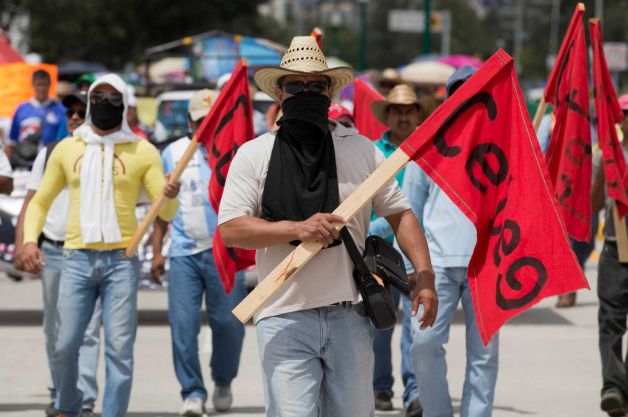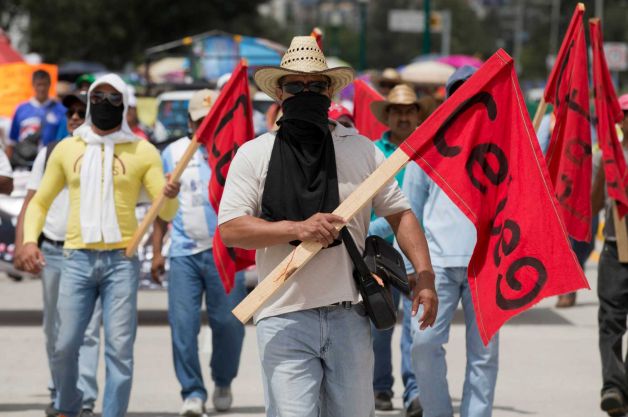 Smoke billowed from a government building in Chilpancingo, Mexico, while hundreds of student and teachers smashed windows and set fires to the capitol building on Monday. The violence is in response to three recent incidents: the disappearance of 43 students who went missing on Sept 26th, believed to be abducted by local police linked to a drug cartel; an attack by police in Iguala, who opened fire on teachers and college students, killing at least six and detaining dozens that have not been returned; and the recent shooting of a German exchange student at the Monterrey Institute of Technology in Mexico City.
Smoke billowed from a government building in Chilpancingo, Mexico, while hundreds of student and teachers smashed windows and set fires to the capitol building on Monday. The violence is in response to three recent incidents: the disappearance of 43 students who went missing on Sept 26th, believed to be abducted by local police linked to a drug cartel; an attack by police in Iguala, who opened fire on teachers and college students, killing at least six and detaining dozens that have not been returned; and the recent shooting of a German exchange student at the Monterrey Institute of Technology in Mexico City.
What is the tipping point that causes a population to move to violence? Decades of repressed social tensions driven by authoritative regimes, economic inequality, urbanization, drought, famine, lack of opportunity, and the unequal distribution of resources exist in the majority of today’s developed and underdeveloped states. Often times, identities, beliefs, and cultures suppress anger and aggression against formal institutions. However, as the Arab Spring demonstrated, a single event can be the catalyst for dramatic change with strategic implications.
The civil war in Syria was the result of years of drought and urbanization that stressed social structures. However, the tipping point occurred when teenagers were taken into custody and tortured by government security forces. That single event triggered the population to mobilize around a narrative against government tyranny, which initiated six months of peaceful demonstrations before government forces began a military crackdown. In Mexico, civil society has coalesced and mobilized against local police linked to organized crime and local drug cartels. In the western Chinese province of Xinjiang, twelve people have been sentenced to death for attacks that killed dozens when a gang wielding knives and axes attacked civilians, a police station, and government offices, over longstanding ethnic and economic issues.
These events are no longer the outliers. As communication technology opens the world to new ideas and information, populations are demanding a voice and change. The ability to predict the tipping point is impossible. However, understanding the underlying social tensions that drive instability is possible. Adopting a population-centric approach to identify and mitigate risk is required by the public and private sector in order to develop sound polices and direct investment more effectively.

